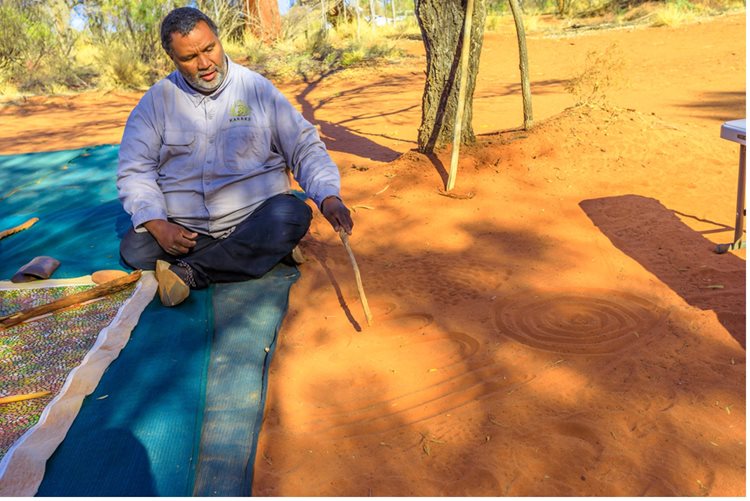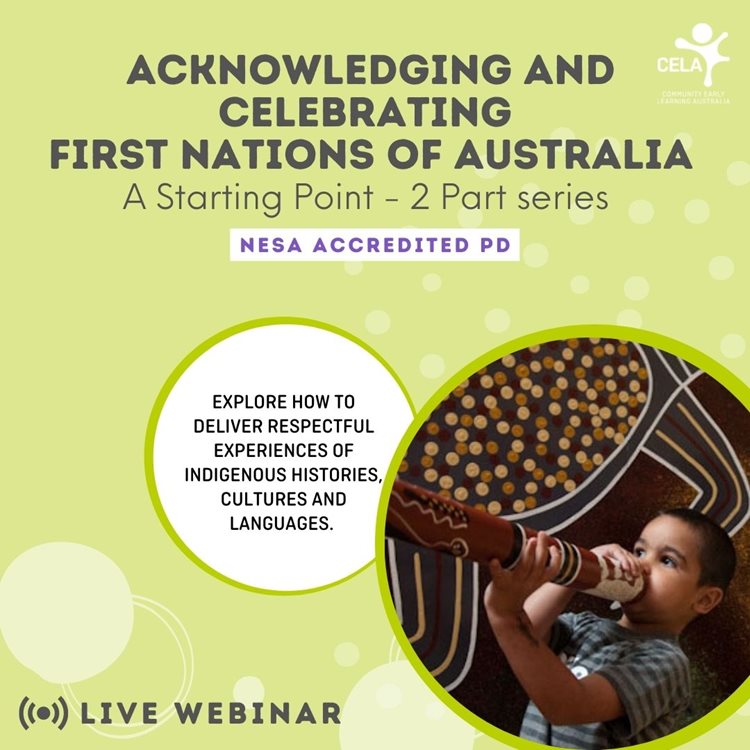Aboriginal art is vibrant, diverse in form and context, and carries important cultural meaning. Throughout time, it has been used as a mode through which knowledge and stories are passed down through the generations. As an educational topic, it lends itself well to being explored in early childhood settings.
As Angelina Hurley pointed out in Reconciliation Australia’s newsletter, “Aboriginal and Torres Strait Islander art is the first art of this nation, an ancient visual gift of culture and learning. It communicates history, story, and language.
“Through our art, the cultural connections of songlines and dreamings continue. Deep principles and concepts are taught through art to tell us the right way to relate to and live with each other. Knowledge is maintained and instructed through art.”
(Source: Reconciliation Australia)
The history and significance of Aboriginal art
Aboriginal art has a long and rich history; it is the oldest art form in the world! The oldest known dated piece of Australian Aboriginal art is a fragment of rock discovered in the Northern Territory of Australia in the 1990s, known as the Nawarla Gabarnmang rock shelter. The rock art on this fragment has been dated to be approximately 26,000 years old, making it one of the world's oldest known examples of rock art. The artwork depicts a variety of animals, including kangaroos, crocodiles, and turtles, as well as human figures and geometric designs.

(Nawarla Gabarnmang rock shelter. Photo source: Wikipedia)
Aboriginal art always tells a story; it can be used to transmit and share cultural knowledge. When you look at Aboriginal art, you will see that symbols are often used, and their meanings and ways of depicting them vary greatly across nations. Aboriginal artwork often has different layers of meaning. In some cases, there may be a “general” or “public” version and then a special spiritual version only to be viewed by certain people.
Cultural lore dictates that sometimes, artists will need permission to paint particular stories, especially where there is special cultural information or, for example, if men’s or women’s business is being shared. Sometimes, artwork can be viewed as an aerial depiction of Country.
Children love learning about the symbols and imagery used in this story-telling. There are many ways children can use symbols in activities. For example, you could use symbols in artwork to tell or draw a story and have children tell their stories to their classmates. Another idea is to use symbols painted on stones to play games, e.g. tic tac toe. Children can practice drawing symbols in sand (this can be done inside or out—in a sand pit or a sand tray at a table). Playing matching games with symbol flashcards is also fun.

Sand art created in King’s Creek Station, NT
Moving beyond dot painting
When we talk of Aboriginal art in the educational setting, many people do not realise that dot painting is only one form of Aboriginal art. Though it is widely practised across Australia, its importance and use varies from nation to nation.
It is widely believed that dot designs originated in central Australia, but their use has been adopted across much of Australia over time. However, in some areas, other forms like cross-hatching, line drawing, and use of textiles and designs in the production of cloaks, jewellery and tools etc., may be more locally important.
Given this, should we engage in learning about dot painting in the classroom? Of course, opinions vary, but my thoughts are yes! It is a significant part of culture to be shared, learnt about and celebrated.
The important thing to remember is that dot painting may not necessarily be a traditional form of art on the Country on which you are located or be representative of the cultures of the Aboriginal or Torres Strait Islander children in your classroom. Thus, when exploring Aboriginal art, it is important to:
- Do your research, engage local mob, and learn about the artistic expressions relevant to your local community.
- Explore art practices from a diversity of Aboriginal and Torres Strait Islander nations.
The power of engaging an Aboriginal artist at Armidale Community Preschool
I recently spoke with Armidale Community Preschool, who, in 2022, engaged Aboriginal artist Nick Levy to create a stunning art mural in the foyer at their service. Nick’s artwork is vibrant and colourful and features a wide range of Aboriginal symbols. Their centre director spoke to me about how their children and families actively engaged with Nick while he was creating the artwork and the incredible value it brings to their centre.

“When Nick was painting the mural, the children were able to see him painting it and showed a lot of interest and talked to him," shared Director Sue Motley. "Some children were guessing what he was painting, others were making suggestions to him. They then wanted to engage more in painting activities at preschool.
“The mural is in our front foyer, so as soon as you open the door, it is welcoming to our families and visitors. It has been a wonderful conversation starter with families, visitors and children; they talk about their favourite animal or part of the painting. Current and new families and visitors can see we are an inclusive service.”
Aside from being a permanent visual illustration of Aboriginal culture in your service, artwork like this has a wonderful way of stimulating people’s interest in learning more. Children and families alike are prompted to delve deeper into learning about Aboriginal culture when they see a piece of art like this in their everyday space.
“Once we shared the final painting on Facebook, we got so much positive feedback and comments from organisations all over Australia," recalled Sue. "Educators have a sense of pride when people ask questions, and we talk about what the painting means. We have a nature-based philosophy, so we asked Nick to include animals like the totem for the Anaiwan people, the Echidna (Aboriginal name Iwata). He also included the blue tongue lizard that frequents our play spaces and the cockatoos that fly overhead. Nick decided his painting represented the seasons with colours and the animals but also the dreaming and spirits”.
In this way, Armidale Community Preschool provides space for the children to learn about their local Aboriginal community; about the Country they play on, and aspects of Aboriginal culture like totems, seasonal indicators and connection to Country. This helps strengthen a sense of community and belonging in their service.
If you are interested in exploring Aboriginal artwork in your service, there are many Indigenous artists who commission work like this. We encourage you to reach out to artists in your local area and take that important step towards demonstrating your commitment to reconciliation in this way.
The Supply Nation website could be a great place to start your exploration: https://supplynation.org.au/
Other articles related to this story:
Amplify: Championing reconciliation through art
Amplify!: Avoiding the trap of cultural tokenism
Amplify!: Demonstrating respect for Country
Riley Callie Resources: Aboriginal symbols—a rich and beautiful mode of cultural expression
Professional Development relating to this topic:

FIND OUT MORE